#Study in Malaysia from Pakistan
Explore tagged Tumblr posts
Text

https://paragoneducation.pk/study-in-malaysia-from-pakistan/
0 notes
Text
0 notes
Text









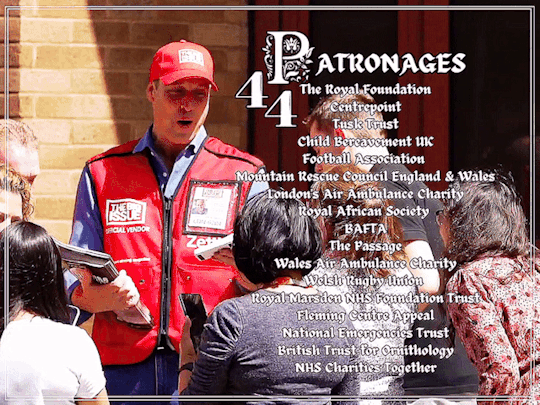
HAPPY 42ND BIRTHDAY TO HRH THE PRINCE OF WALES, WILLIAM ARTHUR PHILIP LOUIS ♡
On 21 June 1982, Prince William was born to Diana and Charles, then known as Prince and Princess of Wales in St Mary's Hospital, London, at at 21:03 BST. He was born during the reign of his paternal grandmother Elizabeth II and was the first child born to a Prince and Princess of Wales since Prince John's birth in July 1905.
The little prince's name was announced on 28 June as William Arthur Philip Louis. Wills was christened in the Music Room of Buckingham Palace by the then Archbishop of Canterbury, Robert Runcie, on 4 August.
William studied at Jane Mynors' nursery school and Wetherby School in London before joining Ludgrove. He was subsequently admitted to Eton College, studying geography, biology, and history at the A-level.
The Prince undertook a gap year taking part in British Army training exercises in Belize, working on English dairy farms, and as part of the Raleigh International programme in southern Chile, William worked for ten weeks on local construction projects and taught English.
In 2001, William enrolled at the University of St Andrews, initially to study Art History but then changed his field of study to Geography with the support of the love of his life Catherine Elizabeth Middleton who he met while at school.
Will and Cat fell in love during their time at uni, and married at Westminster Abbey on 29 April 2011. The couple have three adorable cupcakes Prince George (b.2013), Princess Charlotte (b.2015) and Prince Louis (b.2018). The family of five divide time between their official residence, Kensington Palace and their two private residences - Amner Hall & Adelaide Cottage.
After university, William trained at the Royal Military Academy Sandhurst. In 2008, he graduated from the Royal Air Force College Cranwell and joined the RAF Search and Rescue Force in early 2009. He transferred to RAF Valley, Anglesey, to receive training on the Sea King search and rescue helicopter, which made him the first member of the British royal family since Henry VII to live in Wales.
During his active career as a Search and Rescue Pilot, William conducted 156 search and rescue operations, which resulted in 149 people being rescued. He then served as a full-time pilot with the East Anglian Air Ambulance starting in July 2015, donating his full salary to the EAAA charity.
Working with all branches of the military, he holds the ranks of Lieutenant Colonel in the Army, Commander in the Navy and Wing Commander in the Air-Force
Upon their wedding, WillCat became HRH The Duke and Duchess of Cambridge, The Earl and Countess of Strathearn and Baron and Lady Carrickfergus. He became the heir apparent on 8 September 2022, receiving the titles of the Duke of Cornwall & The Duke of Rothesay. William & Catherine were made The Prince and Princess of Wales by Kimg Charles on 9 September 2022. Additionally, William also became the Prince & High Steward of Scotland, Earl of Chester, Earl of Carrick, Lord of the Isles, and Baron Renfrew.
As well as undertaking royal duties in support of The King, both in the UK and overseas, The Prince devotes his time supporting a number of charitable causes and organisations with some of his key areas of interest being Mental health, Conservation, Homelessness, Sports and Emergency Workers.
He has undertaken several overseas trips representing the monarch, covering a wide array of countries like Australia, Canada, Namibia, Malaysia, South Africa, Tanzania, Pakistan Italy, Jordan, Kuwait, France, India, The Bahamas, Belize, Afghanistan etc ; He is also is also a founder of various initiatives like United For Wildlife, Heads Together, Earthshot and Homewards.
#happy birthday william ❤️#william's 42nd birthday#prince of wales#the prince of wales#prince william#william wales.#william prince of wales#british royal family#british royals#royals#royalty#brf#royal#british royalty#catherine middleton#kate middleton#duchess of cambridge#2024 wales birthdays#prince george#princess charlotte#prince louis#royaltyedit#royalty gifs#royalty edit#royaltygifs#my gifs#21062024
168 notes
·
View notes
Note
[Huey Zoomer Anon]
>Online activists says they know everything about how the Nazis think because they went to college
>Never look up Muslims antisemitism and that Nazis ran on Conflict Theory like modern feminists
Also I seen Jews say that the left only care about dead Jews *le gasp* have they cracked the code as well to the BLM riots when they don’t say jackshit about the Chiraq shootouts?
They want Judaism (and Hinduism as well) to be a DEAD religion and culture that they can bastardized like they did with Egyptian, Greek, and Norse religions
And if they want living Jews (do you guys have “coconut” person insult? Could apply to a certain amount of activists) it’s either in Native American reservations or back to the ghetto with all the self destructive habits like with African Americans.
It not like the Jews can never truly recover from the holocaust because they never EVER had to rebuild before
*Eye rolls given the Destruction of The Ten Tribes and the Falls of the First and Second temples*
Do leftists think Jewish history of persecution begins and end with the holocaust?
Also they never figure out why Jews prefer to stay in one tiny little part of MENA?
Damnit Muslims, why must you use my stepmom abusive tactics to gaslight the world?!
>Never look up Muslims antisemitism and that Nazis ran on Conflict Theory like modern feminists
or the fact that they collaborated with the nazis, then when it's pointed out it's either ignored or rationalized.
They want Judaism (and Hinduism as well) to be a DEAD religion and culture that they can bastardized like they did with Egyptian, Greek, and Norse religions
that's actually a interesting thought, you might be on to something there.
It not like the Jews can never truly recover from the holocaust because they never EVER had to rebuild before
We could argue Israel is them rebuilding there's also other times but you gotta go back a good long while for that, nothing so massive as the loss from the Holocaust was that I know of though yes.
*Eye rolls given the Destruction of The Ten Tribes and the Falls of the First and Second temples* Do leftists think Jewish history of persecution begins and end with the holocaust?
Hope not, especially with the number of people I've seen lately either denying it happened, playing it down, or saying they deserved it
Also they never figure out why Jews prefer to stay in one tiny little part of MENA?
Muslims found a rock they wanted to keep in Jerusalem, and you know how it is with rocks in the middle east.
Damnit Muslims, why must you use my stepmom abusive tactics to gaslight the world?!
You could probably flip that, since they've been at it longer.
Important to note that this is not all of them doing this either, that and in some circumstances it's important to remember that some folks don't actually have a say in the matter when it comes to following Islam.
Or at least you need to follow some religion, and Islam is the one you'll have the easiest time following from a social acceptance standpoint.
Atheists living in 13 countries risk being condemned to death, just for their beliefs (or non-belief) according to a new, comprehensive report from the International Humanist and Ethical Union out on Tuesday. All 13 countries identified by the study are Muslim majority.
The countries that impose these penalties are Afghanistan, Iran, Malaysia, Maldives, Mauritania, Nigeria, Pakistan, Qatar, Saudi Arabia, Somalia, Sudan, United Arab Emirates and Yemen. With the exception of Pakistan, those countries all allow for capital punishment against apostasy, i.e., the renunciation of a particular religion. Pakistan, meanwhile, imposes the death penalty for blasphemy, which can obviously include disbelief in God.
The study's interactive map gives a good, broad, overview of which countries punish apostasy and blasphemy by death (black), with prison time (red), or place legal restrictions on (non-)religious speech and thought (yellow):

I could engage in some whataboutism concerning crosses on grave markers of the phrase "In God We Trust" on our money, but eh it's been done to death.
Wonder what would happen if everyone was given a choice in the matter.
3 notes
·
View notes
Text
Asia tackles new monkeypox strain escalation
Asian countries from China to Pakistan have stepped up surveillance of a mutated monkeypox virus that is spreading outside Central Africa, where the World Health Organisation declared a public health emergency this month.
A case in Sweden last week underlines the international threat posed by the so-called 1B strain, which has reportedly killed more than 500 people, mostly children, in the Democratic Republic of Congo. Across Asia, travellers arriving from countries affected by the virus are being asked to report symptoms and hospitals are stepping up surveillance for the disease.
Unlike the smallpox-causing virus, which spread worldwide in 2022, the new strain is more dangerous, with a mortality rate of more than 3 per cent. It is also possible that infected people can transmit the virus days before symptoms appear, making it more difficult to control the disease by identifying and isolating cases.
China is asking incoming travellers from affected countries and regions, those who have been in contact with smallpox patients, and those experiencing symptoms to report to customs officials upon entering the country, where they may be required to undergo testing, the statement said.
Health authorities in India have ordered increased vigilance at international airports and ports for passengers with smallpox symptoms, and have designated hospitals and laboratories to deal with potential patients, the Economic Times reported. Indonesia and Malaysia have also taken similar measures.
While smallpox is back in the spotlight, health officials are reporting cases probably caused by the milder strain 2b. A case of infection with strain 2b was confirmed in Pakistan on 13 August. The Philippine Department of Health said it had identified the first case of smallpox in the country since December in a 33-year-old man who had not travelled recently. The strain that caused the disease is not yet known.
A 2022 UK study found that more than half of mpox cases were spread by infected people who had not yet developed symptoms. Emerging evidence suggests that people incubating the disease can transmit the smallpox virus for up to four days before symptoms appear.
Luxembourg’s health minister said last Friday that the risk of the Luxembourg population contracting smallpox is “low.”
WHO recommends special measures to control monkeypox outbreak
The World Health Organisation is recommending special measures to control the outbreak of mpox, also known as monkeypox, in five African countries – the Democratic Republic of Congo, Burundi, Kenya, Rwanda and Uganda.
According to WHO recommendations, states should strengthen national health emergency response mechanisms, improve coordination of mpox control efforts, improve laboratory diagnosis of the disease, and identify contacts of mpox-infected people with others. In addition, WHO is calling for increased border surveillance to identify those who have become ill, vaccination and better public awareness of the disease and control measures.
The African Union Health Service declared a public health emergency on the continent due to the spread of monkeypox on 13 August. The disease has been detected in 17 African countries, totalling more than 38,000 infections and more than 1,400 deaths. The epicentre of the outbreak has been the eastern Democratic Republic of Congo, where 92% of African cases have been reported.
Read more HERE

#world news#news#world politics#asia#africa#congo#public health#healthcare#health and wellness#wellness#mpox#mpox outbreak#mpox virus#mpox news#mpox vaccine#monkeypox#outbreak
2 notes
·
View notes
Text

Elizabeth II liked to drink a Martini before meeting guests when she was flying and always requested a particular type of mint sweet during take-off, it has emerged.
The late Queen also enjoyed following the route map while travelling.
Her flying habits are revealed in a treasure trove of memorabilia kept for decades by an air hostess who worked for British Airways for 28 years from 1970.
Elizabeth Evans, from Birmingham, served many famous travellers during her long career, among them the late Queen and Prince Philip during their 1989 tour of Singapore and Malaysia.
A collection of mementoes found in Mrs Evans’ study following her death contains confidential instructions on how to look after the royal couple.
The points of etiquette reveal that the late Queen liked a bowl of sugar-free Velamints beside her on take-off and that she should be left to doze if she was sleeping prior to landing.
She also preferred to use her own pillows, with her personal dresser advising on how to make up her bed.
Any guests joining the royals for dinner would be told what time cocktails were to be served in the royal compartment and the Queen would later be asked which wine she would like served with dinner.
“Her Majesty tends to like a Martini before her guests arrive,” the notes state.
Canapes were served with cocktails before the guests took their seats and staff were reminded that the late Queen must be served first.
One section of the notes is titled “Tips for Royal Compartment,” under which is listed: “Route map – Her Majesty enjoys looking at these.”
Members of the flight crew were told not to pass through the cabin and to restrict all noise.

The memorabilia, inherited by Mrs Evans’ niece, Jo Smallwood, is expected to fetch between £400-£600 when it goes under the hammer at Hansons Auctioneers on August 20.
Charles Hanson, owner of the auctioneers, said:
“Elizabeth must have been extremely highly regarded by BA because she served some of the most important people in the world. Take that 1989 British Airways royal flight.
Her memorabilia includes confidential instructions on how to care for our late Queen and Prince Philip – right down to the sweets Her Majesty preferred on take-off.”
Velamints were launched in the US in 1977 and are said to have become president Ronald Reagan’s favourite mint.
They were dubbed “the Official Air Force 1 mint.”

Meanwhile, both the late Queen and her husband were known to be fond of a Martini, which they would typically enjoy before dinner.
In late 2021, a year before her death, it emerged that she had given up drinking on doctors’ orders.
She was said to favour a gin and Dubonnet at lunchtime, and a gin and vermouth cocktail before dinner.
Mrs Evans also crewed Concorde, the world’s first commercial supersonic airliner, which would fly at twice the speed of sound, during the 1980s and 1990s.
She kept signed menu cards and other paraphernalia relating to many of her VIP passengers, including Rod Stewart, Cliff Richard, Arnold Schwarzenegger, and the late Patrick Swayze.

Mr Hanson noted that although the late Queen had flown to Singapore and Malaysia on BA, she had closely followed Concorde’s development.
“Elizabeth’s archive sweeps us back in time to the 1970s, 80s and 90s when flying on Concorde was a luxurious privilege enjoyed by the wealthy jet-set,” he added.
“Celebrities flocked to use its services and carrying royalty was the norm. Service had to be first class.”
He said of the late Queen:
“She enjoyed her first supersonic flight in 1977 and used the aircraft for state visits.
The Queen of the Skies was seen as fitting transport for the Queen of the realm."
“In 1991, Charles and Diana, then the Prince and Princess of Wales, flew supersonic during a trip to Oman and Pakistan."
“Elizabeth gathered mementoes throughout her career. Her memorabilia captures the life and times of Concorde at its height and the detail that went into luxury travel with British Airways.
No VIP wish was too small to be accommodated. Even smoking was permitted on board back then.”

Ms Smallword, 53, a retired police officer, from Solihull, West Midlands, said:
“I was aware of some of the things Elizabeth had kept from her career with BA but nothing on this scale.
She married late in life, moving to Devon and finally Hermanus, in South Africa.
The objects were found there in her study following her death at the age of 70 in 2017.
I came across them when I travelled to South Africa to arrange the funeral.
Having found this treasure trove relating to my aunt’s career and experiences with BA, especially the fantastic trips on Concorde and serving the Queen, I found it sad that none of it had seen the light of day.
I believe this collection is a little piece of history that should be shared and enjoyed by somebody.”
Mrs Evans was awarded a certificate to commemorate the time she served the royals on British Airways flights.
She also amassed signatures from the likes of Warren Beatty, Virginia Wade and Billie Jean King, which will also be sold by Hansons.
#Queen Elizabeth II#Prince Philip#Duke of Edinburgh#British Royal Family#British Airways#Elizabeth Evans#air hostess#Velamints#mementoes#confidential instructions#royal etiquette#Royal Compartment#route map#royal flights#Jo Smallwood#Hansons Auctioneers#US President Ronald Reagan#martini#cocktail#Concorde
3 notes
·
View notes
Text
Faisal Alam
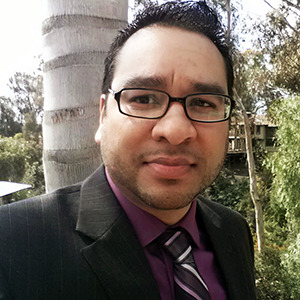
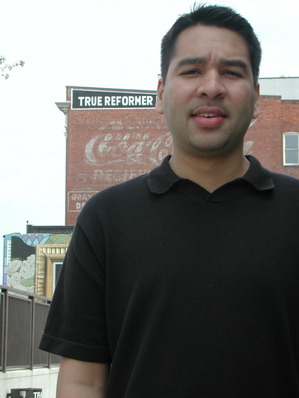
DOB : 1977 maybe
Occupation: LGBTQ+ rights activist,Community leader,Writer
Gender : Male
Sexuality : Gay
Religion : Islam
Ethnicity : South Asian
Nationality : Pakistani 🇵🇰
Faisal Alam is a Pakistani-American Gay Muslim man.He is a faith-based activist,writer,advocate for South Asian & Muslim LGBTQ+ folks, & public speaker.He founded the Al-Faitha, a pioneer org. for queer muslims.His organization helped to advance Queer Muslim movement internationally.He is the co-founder of Muslim Alliance for Sexual and Gender Diversity , a National Muslim LGBTQ+ organization in North America.
He is a member of the National Religious Leadership Roundtable (NRLR), an interfaith network of US LGBT leaders,member of the National Advisory Board for the Center for Lesbian and Gay Studies in Religion & Ministry.He also a member of Muslims for Progressive Values (MPV).
Early Life
Faisal Alam was born in the Islamic State of Pakistan & was raised in a muslim household.At the age of 10 his family arrived in the USA in 1987 and resided in the rural middle-class town of Ellington,Connecticut. He completed his studies in America.
Activism & Advocacy
In 1997, Faisal Alam started an email listserv for LGBTQ+ Muslims that led to the founding of Al-Fatiha Foundation in 1998 in Boston.Since then the org. had grown significantly, with its sister-organizations & chapters in the Canada,USA,UK,Spain,Turkey & South Africa.Under his leadership,Al-Fatiha and the LGBITQ Muslim communities have received wide media recognition.He was served as a President of Al-Fatiha, from 1998-2004.Faisal Alam represented Al-Fatiha at both National Religious Leadership Roundtable & the Center for Lesbian & Gay Studies in Religion and Ministry.During his leadership, Al-Fatiha organized 4 major conferences,retreats for LGBTQI+ Muslims & their Allies from around the world.In 2005, Al-Fatiha launched national fundraising campaign, where Faisal traveled around the country to meet with local LGBTIQ Muslims & their Allies.In July 2005,Al-Fatiha hosted the the first LBTQ Muslim women’s retreat in Philadelphia and in September 2005, hosted the 5th International Retreat for LGBTQIA+ Muslims.Additionally the org. made significant links with sexual & gender minorities within the Islamic world,helping to support the struggle for the recognition of human rights in countries including Egypt, Turkey,Palestine,Pakistan,Malaysia,Saudi Arabia,Bangladesh,etc.After getting threats & pressure from muslim conservatives, radicalists Al-Fatiha members closed the organization.
In addition to his LGBT faith-based activism, Faisal is also involved in numerous local organizations.He is a member of AQUA (Asian Queers United in Action) of Washington,Khush-DC,National Minority AIDS Council of Washington,etc.He is also an active member in OUTFront, the LGBT program of Amnesty International,Human Rights Watch,National Gay & Lesbian Task Force.He did work in HIV/AIDS prevention and education in the Asian & Pacific Islander communities.
In 2011, Alam and other LGBTQ Muslim activists were invited by the National Gay and Lesbian Task Force to form a Queer Muslim Working Group to evaluate the needs of the LGBTQ Muslim community.Alam was instrumental in bringing together a diverse group of seasoned leaders to undertake this project. In 2013, the Queer Muslim Working Group launched a new organization – the Muslim Alliance for Sexual and Gender Diversity.Faisal has also spoken at many LGBTQ interfaith panel discussions and has presented at numerous interfaith services, around the country.He has also spoken at many major events including Youth Pride Day in Washington,DC (2000),Millennium March on Washington (2000) & Creating Change(National LGBT Activist Conference, 2001).
Honorary
Faisal has received numerous recognitions & awards for his activism on behalf of LGBTQQI+ Muslims.The Advocate Magazine selected him as an "Innovator" Genre Magazine has recognized him as a "Founding Father" and the Utne Reader chose him as one of 30 "Young Visionaries Under 30" In 2005 the Equality Forum recognized Faisal as one of “40 Heroes” who have "made a defining difference in LGBT civil rights over the last forty years."In 2008 Faisal received an award from Pride Toronto for his "outstanding contribution in the area of spirituality that positively impacts LGBT communities.
#Gay Muslim#lgbtqi+#LGBT Faith Leader#LGBTQ leader#Homosexuality in Islam#Faisal Alam#Pakistani Gay#Pakistani LGBT#queer pakistan#brown#south asian
8 notes
·
View notes
Text
Best Scholarships available to Indian students in Japan
Do not panic; you are not alone! Although Japan has many educational possibilities, funding your study might be rather important. Good news: Indian students hoping to follow their academic dreams over here will find various scholarships available in Japan.

The scholarship to study in Japan for Indian students serves purposes beyond just paying for tuition. They cover living costs, grants for research, and other needs so you may concentrate on your studies free from financial concerns. Whether your intended program is undergraduate, postgraduate, or research, this blog article will highlight some of the best scholarships available to Indian students in Japan.
Top Indian student scholarships available in Japan
Although studying in Japan might be fascinating, many students find the financial element to be difficult. The good news is, however, that some scholarships are especially meant to help Indian students in Japan follow their academic aspirations.
Scholarships for Research Students
Research/master courses/Ph.D. courses represent a graduate school-level scholarship. Your age has to be less than 35 years; hence, applicants had to have been born either on April 2, 1990 or after.
JT Asia Scholarship
Students from Asian countries, including India, Indonesia, Cambodia, Singapore, Sri Lanka, Thailand, China, Korea, Taiwan, Nepal, Pakistan, Bangladesh, Philippines, Bhutan, Brunei, Vietnam, Malaysia, Maldives, Myanmar, Laos, and Timor-Leste, applying to private universities can apply for this scholarship in Japan.
It is a merit—and need-based scholarship providing a stipend of up to 150,000 JPY per month, covering your tuition expenses as well.
Conclusion
All things considered, scholarship to study in Japan for Indian students provides exceptional chances to pursue academic achievement in Japan.
0 notes
Video
youtube
I Spent 30 Days Studying the Indo-Iranian Language Family and Discovered...
First up, we have the Indo-Aryan languages. If you’ve ever traveled through India or even just watched a Bollywood movie, you’ve likely encountered these languages. They’re the largest and most widely spoken group within the Indo-Iranian family, and their story is one of migration, cultural expansion, and trade. Now, let’s talk about the Prakrit languages. These are the Middle Indo-Aryan languages that flourished in ancient and medieval India. Among them, Pali holds a special place, particularly for those interested in Buddhism. It’s the language of the Buddhist scriptures, and its simplicity and clarity have made it an essential part of spiritual study. Imagine monks in ancient monasteries, reciting texts in Pali, preserving wisdom that would transcend generations. Fast forward to today, and we have a plethora of modern Indo-Aryan languages. Hindi, for instance, is spoken by millions across India. It’s not just a language; it’s a cultural phenomenon. With its many dialects, including Hindustani, which serves as the basis for both Hindi and Urdu, it’s a vibrant expression of the diverse Indian identity. And speaking of Urdu, it’s fascinating how it shares roots with Hindi yet takes on a unique flavor with its Perso-Arabic script and influences from Persian and Arabic. It’s a beautiful example of how languages can evolve and adapt, reflecting the cultural exchanges that have taken place over centuries. Then there’s Bengali, the melodic language of Bangladesh and West Bengal, and Punjabi, with its rich traditions and scripts like Gurmukhi and Shahmukhi. Each language tells its own story, enriched by the history and culture of its speakers. Marathi, Gujarati, Odia, Assamese, and even Sinhala in Sri Lanka—all of these languages contribute to the vibrant linguistic mosaic of South Asia. But what’s truly remarkable is how these languages have absorbed influences from other linguistic families, such as Dravidian languages, Persian, Arabic, and even English. Think about it: when you speak Hindi, you might sprinkle in a few English words, or you might hear Arabic phrases in Urdu poetry. This blending makes languages dynamic and alive, constantly evolving with the people who speak them. Take Persian, for example. It’s not just a language; it’s a cultural bridge. Persian has historically influenced Indo-Aryan languages, especially Urdu, through what we call the Persianate culture. Imagine the poets and scholars of the past, crafting verses that would inspire generations, leaving a lasting imprint on the languages spoken today. Pashto, predominantly spoken in Afghanistan and Pakistan, and Balochi, found in the Balochistan region, are also part of this fascinating family. Dari, closely related to Persian, serves as one of Afghanistan’s official languages. Each of these languages carries the weight of history, culture, and identity, showcasing the rich tapestry of the Iranian linguistic heritage. Now, you might be wondering about the influence of Indo-Iranian languages beyond South Asia. Southeast Asia, while not as prominently influenced, has still felt the touch of these languages. Think about the historical trade routes that connected India with places like Thailand and Cambodia. Languages like Thai and Khmer have borrowed vocabulary from Sanskrit and Pali, particularly in religious and literary contexts. It’s a testament to how interconnected our world has always been, even long before the internet! And let’s not forget the Malay and Javanese languages in Malaysia and Indonesia. They, too, have absorbed Sanskrit terms due to the profound cultural influence of ancient Indian civilizations. It’s like a linguistic echo of a time when trade and cultural exchange flourished, leaving behind a legacy that still resonates today.
0 notes
Text
WHAT DOES IMRAN KHAN MEAN BY THE STATE OF MADINAH, A WELFARE STATE?
ABSTRACT
The concept of the welfare state has gained popularity over the last few decades and every state now likes to call itself a welfare state. In most of welfare state concepts, the main concentration is on the material welfare of the people. The Islamic notion of the welfare state is comprehensive because it aims at achieving the total welfare of mankind. Some diverse models provide insights into the different kinds of welfare states, but less attention has been given to understand the Islamic model of the welfare state because no such state exists in the world. This paper is intended to explore the essence and the potential of the Islamic concept of the welfare state. It also discusses the principle of welfare in Islamic sources and whether the Islamic concept of welfare State is practicable in the modern world. This paper seeks to study the interrelationship between the political and economic contents of the Islamic way of life and discusses the nature and functions of the Islamic State toward peoples' wellbeing. The Islamic concept of the Welfare State is based not only on the manifestation of economic values but also on the moral and spiritual, social and political values of Islam. The article will further discuss the various policies of Islamization in Pakistan. This paper will maximize the scope of this debate on the welfare state.
The concept of the welfare state has become very popular in recent times. There are different connotations of the term „welfare state‟ and this is the reason that the welfare ideals and policies almost differ from state to state. However, there are some generally understood meanings of this ideology. In a welfare state, the government assumes responsibility for the provision of a minimum standard of living for every citizen. The welfare state is a concept of government in which the state plays a key role in the protection of the economic & social well-being of its citizens. It is based on the principles of equality of opportunity, equitable distribution of wealth, and public responsibility for those who are unable to avail themselves of the minimal provisions for a good life. There are two main interpretations of the idea of a welfare state. A model in which the state
assumes primary responsibility for the welfare of its citizens through the provision of social security for all against accident, sickness, unemployment, old age, and disability. This requires tight bureaucratic control over the people concerned, with a maximum of interference in their lives to establish who is "in need".
Islamic Welfare State: A Dream of Reality
There is a common tendency in almost all Muslim states to portray them as the Islamic Welfare States. The Arab Gulf states have a higher welfare aspiration. Oil-rich Arab countries such as UAE, Qatar, and Saudi Arabia and to a lesser extent Libya are good examples of this welfare model. These states have ambition for welfare but little has been done practically. In the contemporary Islamic world, only two countries Turkey and Malaysia have produced welfare for their citizens.
In 1979, in Iran Muhammad Raza Shah Pehlwi's government was overthrown and the government with the Islamic Republic was replaced under the leadership of Khomeini. Iran has strong persuasion to do the same but is severely restrained with sanctions. Arab states have better economic development but
their welfare is restricted to a certain segment of the society, marginalized groups are still for away from welfare benefits
Pakistan as a Case Study
Most people in Pakistan believe that Pakistan is the only Muslim country that was established in the name of Islam. According to the Constitution of Pakistan, Islamic Republic of Pakistan is an Islamic State with Islam as the official religion of the country and all laws should conform to Shari’a
In 1977, a military General Zia-ul-Haq imposed martial law with the intention of Islamization of institutions. He promised to establish an Islamic State and enforce Sharia law, a dream that did not come true.
The main focus of his policy of “Islamization was regulative, punitive and extractive and Zia’s little attempt to bring socio-economic equality under Islamic law”.
In Pakistan, several religious Political parties have the aspiration for enforcement of Shari’a which will ultimately lead to the emergence of the Islamic welfare state. In the 2018 elections, the first point of the Islamic parties' alliance (MMA) election manifesto was the implementation of Shari’at laws. A militant group named Tehreek Nifaz-e-Shari’at Mohammadi tried to enforce Shariah law in the Malakand Division of Pakistan. All these historical events indicate a strong desire in Pakistan for the Islamic welfare state. Different groups are adopting different ways for its implementation. In 2015, Khadim Hussain Rizvi established Tehreek-e-Labbaik Pakistan, a religious-political organization. He again took the slogan of religion as massive agitation in the country and locked down the capital, Islamabad, and later on the provincial capital, Lahore.
In 2018 elections, Pakistan Tehrik Insaf (PTI) won the elections and former cricketer, Imran Khan, sworn as Prime Minister of Pakistan. He had expressed his aspiration to make Pakistan an Islamic welfare state on the principles of the earlier Islamic State of Medina.
In April 2019, a leading newspaper quoted his words, "Prime Minister Imran Khan has said that we have entered the final phase to build Pakistan on the principles of Riyasat-i-Madina, a society based on justice, compassion and the dignity of our human beings.”
Imran Khan aspires to make Pakistan a progressive nation and an Islamic Welfare State‟. He has not dreamt of anything different from other leaders of the Muslim world like Turkey‟s Erdogan or the ousted Mursi‟s government in Egypt.
Conclusion
It is evident from the above discussion that the Islamic welfare state has various dimensions and responsibilities but also various interpretations by different sects of the Muslims. This is always an ideal model of state for every Muslim but in spite of strong aspiration for the creation of an Islamic Welfare State, one cannot find a single Islamic State in the world to be presented as a model. Another strange thing is that in different Islamic States, different roots have been adopted for achieving this goal. In Afghanistan for instance, the Taliban started an armed struggle for the creation of an Islamic State but failed
0 notes
Text
LBF 2024 – the public space returns with real conversations
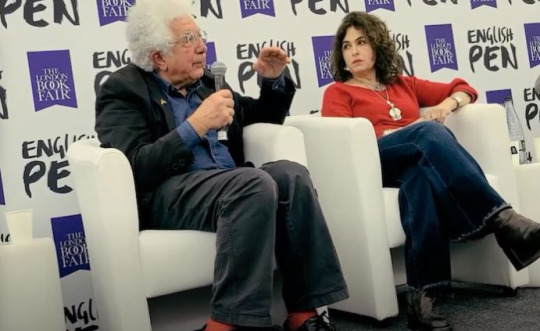
The 2024 London Book Fair returned this year at the iconic Olympia with its famous barrel-vaulted roof and magnificent cast-iron galleries. The fair had been moved to 12 to 14 March, after initially being scheduled for 16 to 18 April. The change was prompted by the Bologna Children’s Book Fair announcing its dates for 8 to 11 April, just a few days before the original LBF dates, which would have been a problem for those attending both fairs.
http://indianprinterpublisher.com/wp-content/uploads/2024/03/lbf24-photo-midas-pr-web750.jpg
Exhibitors from India were also back in business with around 35 booths, including NBT’s collective stand. Unfortunately, and unlike previous years, LBF’s country statistics this year provided numbers not according to where exhibitors are headquartered but based on their markets. Out of the 180-some exhibitors from Asia-Pacific, 56 were based or selling in India, 56 in mainland China, 42 in Japan, 36 in Hong Kong, 36 in South Korea, 35 in Singapore, 29 in Malaysia, 28 in Taiwan, 26 in Thailand, 24 in Vietnam, 23 in the Philippines, 20 in Indonesia, several companies in Nepal, Pakistan, Bangladesh, Cambodia, Myanmar, Mongolia, and 67 in Australia, New Zealand and the Pacific islands.
India’s multilingual opportunity
One of the panel discussions held on the first day of the fair, “Dynamics of India’s Multilingual Market,” explored the intricacies and opportunities of India's multilingual publishing market. The panel included Yuvraj Malik, NBT’s managing director; Aditi Maheshwari, CEO of the Vani Prakashan Group; Prashant Pathak, director of Publishing Operations at Prakash Books; and, Ajay Mago, publisher at Om Books. The discussion centered around the impact of India’s new National Education Policy 2020 and its emphasis on multilingualism. From the rise of Indian languages to the potential for global collaborations, the panel tried to analyse the dynamic forces shaping India’s diverse publishing industry and provide insights to international publishers interested in collaborative ventures.
English Pen seminars – Palestine, free expression
Also on the first day, Book Workers for a Free Palestine held a vigil in front of the entrance, “to mark the death of Palestinian writers, poets, academics and journalists killed by Israel,” as Penguin publishing director Ailah Ahmed explained. The English PEN ran two seminars on ‘Palestine, Israel, and Free Expression in the UK,’ featuring authors Selma Dabbagh, Isabella Hammad, Rafeef Ziadah, Palestine Festival of Literature producer Yasmin El-Rifae, Oxford University professor of International Relations Avi Shlaim, and the vice president of the British Society of Middle Eastern Studies Professor Neve Gordon. The discussion focused on the cancellation of multiple events that were to include Palestinian artists over the past six months.
Iraqi-Jewish Professor Shlaim said that the UK had a longstanding issue with “freedom of expression” when it comes to Israel and Palestine. “The climate of opinion favours Israel and British Jews, and it’s very hostile to Palestinians and Muslims.” He also criticised the International Holocaust Remembrance Alliance’s definition of anti-semitism, which is largely supported by UK institutions as being “weaponised in order to silence free speech on Israel.”
But also at LBF 2024, Profile Books acquired the rights to publish What Does Israel Fear from Palestine? by Raja Shehadeh. In the book, Palestinian lawyer and founder of the human rights organization Al-Haq Shehadah, explores the opportunities for peace that were rejected by Israel since its formation in 1948.
Writers against the war on Gaza
In the meantime, more than 3,000 writers, editors, and Hollywood celebrities have joined forces to express their solidarity with the Palestinian people in a letter responding to the ongoing conflict. Taking their inspiration from the 1960s’ American Writers Against the Vietnam War, they formed an impromptu international coalition, Writers Against the War on Gaza, supported by high-profile names such as Susan Sarandon, Gael García Bernal, Jia Tolentino, Ocean Vuong, Valeria Luiselli, Cathy Park Hong, Hannah Black, Ari Brostoff, Kyle Dacuyan and others from diverse publications and institutions. The authors recognise that while their words alone cannot halt the devastation in Gaza, they intend “to challenge and rectify the distortions and misrepresentations in the media. The coalition strongly condemns those in their field who they believe perpetuate apartheid and genocide narratives.”
The next LBF is to take place from 11 to 13 March 2025.
0 notes
Text
Study at Heriot-Watt University in the UK!

Summary
Heriot-Watt College With a focus on business, engineering, design, and the physical and biological sciences, he is well-respected worldwide.
One of Scotland's most contemporary universities with a global reach is Heriot-Watt University, which is also kind, hospitable, and culturally diverse. It was granted the 2018 title of "International University of the Year" by Times Higher Education.
Ninety-five percent of Heriot-Watt first-degree alumni found employment or continued their education within six months of graduation, making it the highest-paid university in Scotland (Times Higher Education). Because of the core of Heriot-Watt's research-informed curriculum, international businesses actively seek our graduates.
Past Events
Founded in 1821 as the Edinburgh School of Arts, the world's first institute of mechanics, Heriot-Watt University is the eighth-oldest higher education institution in the United Kingdom. In 1966, it was established as a university by Royal Charter. High-quality instruction and hands-on learning are traditions at the university. With five campuses—including ones in Malaysia with more than 1,200 students and Dubai with almost 4,000—this university is really worldwide.
Modern campuses of Heriot-Watt University are located in Edinburgh, Kuala Lumpur, and Dubai and offer a distinctive learning atmosphere. The main campus in Edinburgh is spread across 380 acres and includes residential buildings, residence halls for students, libraries, sports and health facilities, and the student union office. The Dubai campus facilitates exchange programs between the United Arab Emirates and the United Kingdom. In Putrajaya, Malaysia, the purpose-built campus is regarded as the first "green campus."
Ranking and Accomplishments
Ranked 45th in the Guardian University Guide, 57th in the Times University Guide, and 281st in the QS World University Rankings for 2023 respectively.
In the REF2021, engineering research at Heriot-Watt University was scored as 96% world-leading and internationally excellent in a joint submission with the University of Edinburgh, while 97% of the research in physics was ranked as world-leading and internationally exceptional.
Instructors
Infrastructure, Geoscience, Energy, and Society
Physical sciences and engineering
Computer and Mathematical Sciences
Social Sciences with Edinburgh Business School included
Design and Textiles.
Courses
Undergraduate
Postgraduate
Dissection of the Fee Schedule
International students must pay fees between £13,500 and £17,440.
Awards for Scholarships
£10m to support scholarships for tuition (with £3m designated for students in the rest of the United Kingdom).
£1.5 million to provide RUK students with maintenance bursaries (living expenses).
£7.5 million to fund bursaries and scholarships for domestic, international, and EU students.
In addition to UK scholarships for overseas students, the university provides Scottish students with a number of bursaries and scholarships. Selective access scholarships are available from the university to students from low-income families, as well as those with prior caregiving experience and other similar backgrounds.
International Merit Awards
International students are welcome at Heriot-Watt University. The International Undergraduate and Postgraduate Merit Awards are intended to assist students in financing their education at any of the accredited UK campuses offering taught postgraduate or undergraduate programmes situated in Edinburgh.
Undergraduate merit awards
Commendation rewards for postgraduate studies
View Heriot Watt University's available bursaries and scholarships.
Scholarships for undergraduates
Scholarships for postgraduate work
Scholarships for research
Pakistan and the MENA
Assistance for Students
International students can get help and support from Heriot-Watt University's International Students Advice Office. They will offer helpful guidance on a variety of topics, including opening a bank account in the UK, driving within the country, requesting a police visa renewal, making local travel arrangements, and much more. The International Student Guide also offers helpful information before to travel. The International Student Advice Office at Heriot-Watt also provides airport pickups at the start of every term, along with a host of welcome and orientation events.
Students can use a range of NHS dental and medical facilities. All students can get counseling through the student health team. Students can easily access internet resources, groups, and mental health counseling or mentoring. In addition to financial, housing, and safety help, there is round-the-clock online support via the Big White Wall. help for adjusting to university life is also provided.
Student Life
Scotland's capital, Edinburgh, is often regarded as one of the world's most beautiful cities and an ideal destination to live and study. This city is distinct, well-known for its magnificent architecture and internationally recognized events. Students can visit hundreds of restaurants, cafés, pubs, and clubs in Edinburgh, a beautiful city with a mix of modern and traditional establishments. Numerous museums and galleries, along with Edinburgh Zoo and Castle, are among the many attractions. You can also head outside to explore Portobello Beach or climb Mount Arthur. Edinburgh's festivals welcome millions of tourists each year. These include of science and film, the arts celebration, and the Edinburgh Fringe Festival.
Over 60 student organizations can be found in the Herriot Watt Student Union, including faith-based organizations, a medieval society, and a well-known brewing club. Edinburgh offers live music and club nights, pubs, cafés, and quiz evenings. Activities are offered by the Scottish Borders Campus at the Thread. The SU also represents efforts for change and students. The Advice Center provides advice and assistance with many aspects of student life, including support and guidance.
Accommodation
The UK accommodation office at Heriot-Watt University assigns students to campus areas and, if needed, facilitates their search for off-campus housing. There are more than 1,600 spots available on the Edinburgh Campus, and both shared and private rooms are offered. There are 200 self-catered rooms and apartments on the Scottish Borders Campus, and Heriot-Watt University also rents out apartments in the city center and off campus.
Heriot-Watt University ensures that every first-year student receives an offer of housing, either on or off campus. Accommodation choices include broadband, Wi-Fi, a shared kitchen, a community lounge, and self-catering apartments or rooms.
Move around
The Scottish Borders and Heriot-Edinburgh Watt campuses are well connected by transportation. Scotland's capital, Edinburgh, has well-established domestic and international travel connections. Edinburgh Campus may be reached by car in just five minutes from Edinburgh Airport, which offers regular direct flights to a number of locations like New York, London (about an hour away), Amsterdam, Paris, Frankfurt, Brussels, and Zurich.
The city is home to a network of both on and off-road bike lanes, one of which connects the university to the city center. Additionally, buses depart the campus for the city. With connections to England and Scotland, Edinburgh's two main train stations can get you to London in roughly 4.5 hours.
Whereabouts
Including the main campus in Edinburgh, the Scottish Borders Campus in Galashiels, the Dubai Campus in Dubai Academic City, the Orkney Campus in the far north of Scotland, a new campus in Putrajaya, Malaysia, specifically for MBA students, and a partnership with West London College, there are six campuses of Heriot-Watt. One of the most advanced campuses in the UK is the main one, which is situated not far from Edinburgh.
Public transit is easily accessible from Heriot-Watt University's campuses in Edinburgh and the Scottish Borders. Edinburgh has great access to both domestic and international transit due to its prominence as the capital of Scotland. An hour's drive south of Edinburgh is the charming market town of Galashiels, home to the Scottish Borders Campus.
#uk student visa#uk education#study abroad#study in the uk#uk universities#study in uk#uk study visa#uk scholarships
0 notes
Text
"Now when Jesus saw the crowds, He went up on a mountainside and sat down. His disciples came to Him, and He began to teach them."
Matthew 5:1-2
THE BEATITUDES
For the next nine days we’ll look at Jesus’ greatest training program — the Beatitudes. It is important to remember that each of the eight Beatitudes has a two-fold nature: a “knowing” and a “doing” response. We must not only know them, we must also respond to what we learn from them.
Eight times in the Beatitudes it says, “Blessed are….” To understand the Beatitudes, we need to know the meaning of those words. Blessed are refers to Jesus’ evaluation of the kind of person He names in each Beatitude. Jesus was referring to His esteem for that kind of person. His meaning is, “I esteem highly any person who….” He was urging us to have that kind of attitude. His deeper meaning is, “All you who hear Me, choose to become like these kinds of people.”
One noted author calls the Beatitudes, “God’s radical reconstruction of the heart!” We must never consider that Jesus was promising happy conditions, as though He meant, “The one who is poor in spirit will feel good and always be joyful.”
The first four Beatitudes focus internally — that is, they speak to the heart of the one who wants to obey God. They can be viewed as four stepping stones to becoming an obedient servant of the Lord Jesus Christ. They are: humility, mourning, meekness and hunger for righteousness.
The second four Beatitudes focus on the external behaviour of the servant who follows Jesus. They are: mercy, purity, peace-making and persecution.
This teaching has particular relevance for Christians who live under Islam. Restricted, deprived, regarded as second class citizens, laughed at, despised, often living in fear, many times persecuted, the words of encouragement are precious and give fresh hope of another place and time when things will be put right.
While in countries like Malaysia and Indonesia, there are greater freedoms and life is not so difficult, there are restrictions nonetheless. In others like Pakistan, Christians have suffered unjustly and are denied many basic rights. In Saudi Arabia, Egypt, Iran, Sudan, Nigeria and Morocco, the story is similar though the extent of suffering may vary. To all, Jesus gives this important message. We will look at each of the eight Beatitudes individually.
Response
I will study Jesus’ Beatitudes so that I live the way Jesus lived.
Prayer
Pray for Christians in Islamic countries that they will receive great encouragement as they seek to know and live the Beatitudes in their regions of restriction.
© 2013 Open Doors International. Used by permission.
0 notes
Text
https://www.advancemarketanalytics.com/reports/77900-global-motorcycle-boot-market
Advance Market Analytics released a new market study on Global Motorcycle Boot Market Research report which presents a complete assessment of the Market and contains a future trend, current growth factors, attentive opinions, facts, and industry validated market data. The research study provides estimates for Global Motorcycle Boot Forecast till 2029*.
Motorcycle boots are generally worn with the aid of bike riders and vary in size from above the ankle to beneath the knee. They have the look of a typical boot on the outside, however a low heel to assist manipulate the motorcycle. To guard the bike rider's feet, ankles, and legs, motorbike boots are commonly composed of thick, heavy leather-based with energy-absorbing and load-spreading padding, metal, plastic, and/or composite materials. When using a motorcycle, the foremost purpose to put on a boot is to enhance your grip on and off the bike, as properly as to defend your ft in the tournament of an accident. The sole of a first rate bike boot have to be grease resistant and grant exquisite traction.
Key Players included in the Research Coverage of Motorcycle Boot Market are:
Eleone (United States), Bashir Impex (Pakistan), AUGI Sports (Germany), Stylees (Australia), Lionzy (India), Charlie London (United Kingdom), Longview (Canada), Speedy Biker (Italy), Allied Best Fire Group (United States), Hardie-Secure (United Kingdom)
What's Trending in Market: Adopting Collaboration and Acquisition Strategies to Develop and Commercialize
Challenges: Fluctuations in Supply and Demand of Boots due to Enforcement of Stringent Lockdown Measures
Opportunities: High Popularity of Motorcycle Boots across the World
Market Growth Drivers: Growing Awareness about the Benefits of Motorcycle Boots among the People
The Global Motorcycle Boot Market segments and Market Data Break Down by Pattern (Floral, Camouflage, Leopard, Polka Dot), Distribution Channel (Supermarket, Hypermarket, Brand Stores, Online Retail), Toe Type (Round-Toe, Pointed-Toe), Material (Genuine Leather, Rubber, Mesh, Polyester, Nylon, Genuine Suede), Gender (Men, Women), Closure Type (Hook and Loop, Zip, Lace-up Boots, Buckle)
Get inside Scoop of the report, request for free sample @: https://www.advancemarketanalytics.com/sample-report/77900-global-motorcycle-boot-market
To comprehend Global Motorcycle Boot market dynamics in the world mainly, the worldwide Motorcycle Boot market is analyzed across major global regions. AMA also provides customized specific regional and country-level reports for the following areas.
• North America: United States, Canada, and Mexico.
• South & Central America: Argentina, Chile, Colombia and Brazil.
• Middle East & Africa: Saudi Arabia, United Arab Emirates, Israel, Turkey, Egypt and South Africa.
• Europe: United Kingdom, France, Italy, Germany, Spain, Belgium, Netherlands and Russia.
• Asia-Pacific: India, China, Japan, South Korea, Indonesia, Malaysia, Singapore, and Australia.
0 notes
Text

Rafale 'slaughtered' by the Pakistani JF-17 Thunder during exercise in Turkey?
An account of how JF-17 "slaughtered" the Rafale fighters belonging to the Qatar Air Force during a war exercise in Turkey may have raised Pakistan's morale.
Fernando Valduga By Fernando Valduga 10/08/2023 - 20:10 in Military
In June 2021, an air exercise involving air forces from Turkey, Pakistan, Azerbaijan and Qatar called "Anatolian Eagle 2021" took place at a Turkish Air Force base in a coastal city of Konya, Turkey. In the exercise, an alleged victory of the Pakistani JF-17 fighters over the Rafales of Qatar was announced.

Among the aircraft participating in the exercise were the Turkish F-16s, the JF-17 'Thunder' Block II of Pakistan, the four new Rafale jets from Qatar and the MiG-29 'Fulcrum' and Su-25 'Frogfoot' combat jets from Azerbaijan, which had already seen action in the Nagorno-Karabakh conflict.
NATO, of which Turkey is a member, also sends an E-3A AWACS aircraft.
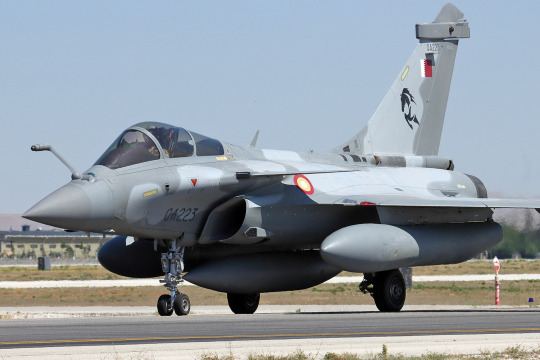
Several Turkish media reported that Malaysia sent officers from its air force to the exercise as observers.
The "Anatolian Eagle" exercise is an annual training that aims to improve the capabilities and understanding between the air forces of the participating countries through the execution of various tactics that simulate air combat scenarios.
Systems such as the Post-Mission Analysis System and the Air Combat Maneuver System (ACMI) were also used in the exercise "Anatolian Eagle 2021".
Not much is known about the air exercise, but some military analysts, claiming to have inside information about the "Anatolian Eagle 2021", suggested that the exercise provided an opportunity for the Pakistan Air Force to test the real capabilities of its JF-17 "Thunder" aircraft in air combat simulations, especially against the Qatar Air Force's Dassault Rafale aircraft, which is also used by the Indian Air Force.
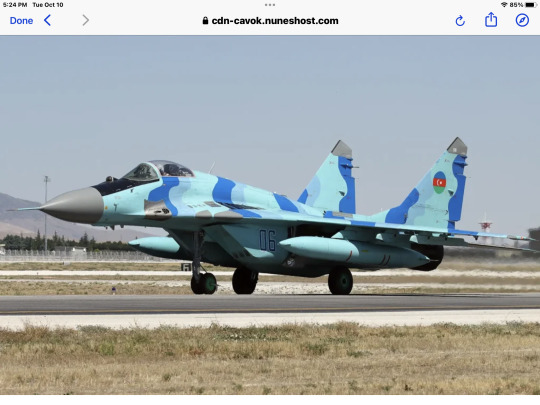
In addition to facing Rafale aircraft, the JF-17, which was developed in collaboration with China, can also face MiG-29 aircraft brought by the Azerbaijan Air Force during the Anatolian Eagle exercise.
According to reports from defense analysts with inside information about the exercise, the "mortality rate" of JF-17 aircraft against Qatari Rafale aircraft was 6:2, which means that Pakistan's JF-17 Block II aircraft "slaughtered" Qatar's Rafales six times compared to only two losses in the air in combat simulations during the exercise.
This conclusion was made by defense analysts based on unconfirmed sources. Whether the JF-17 Thunder aircraft managed to "slaughter" much more advanced and modern Rafale aircraft in Turkish exercise is still a matter of debate.
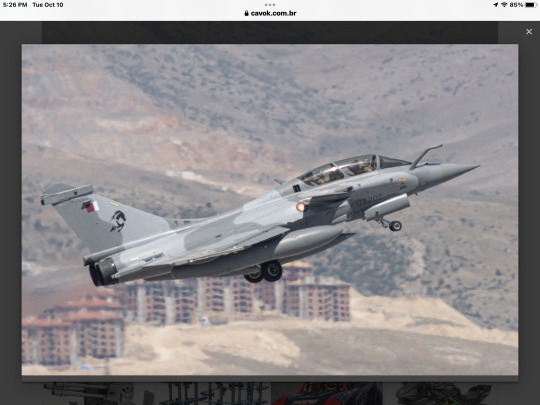
An IAF expert, although he admits that no aircraft is "invincible", said this week that it all comes down to tactics. "The JF-17 has no technological advantage over the Rafale - nothing, nothing," said the veteran IAF test pilot, who flew in Rafale fighters, while asking to remain anonymous.
As the report does not mention details of the aforementioned combat, it is difficult to speculate now, after almost two years. "Anyway, considering a BVR battle scenario, the Rafale will take away the impact of the JF-17 due to its avionics and much superior weapons. In dogfight visual combat, every pilot can have a chance and claim a 'slaughter'.

"These 'slaughter' are difficult to prove on the ground due to the inherently different combat recording systems in the Rafale and JF-17. I feel like it's just a story invented to score points against the IAF," said another retired IAF officer.
The Director General of the Center for Air Power Studies (CAPS), Air Marshal Anil Chopra (retired), said in an article comparing the JF-17 and the Rafale: "Rafale is a game changer in the region, and any comparison with an older generation JF-17 is flawed. Rafale is adding a significant impact to IAF's operational capacity and will help India dominate the Indian Area of Responsibility (AOR) in the regions of South Asia and the Indian Ocean."
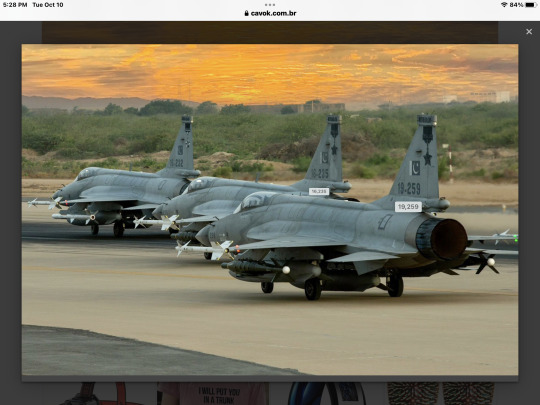
It is important to approach the statements of Pakistani defense analysts with caution, as they can potentially be part of Pakistan's psychological war strategy to undermine the morale of the Indian Air Force, which uses Rafale manufactured by the French company Dassault Aviation.
There is also the possibility that the positive statements about the "excellent performance of the JF-17 Thunder" are probably a form of "marketing" using internal sources to promote the capabilities of aircraft manufactured in Pakistan and China.
However, there is also the possibility that the information provided by these sources is accurate.
Tags: Anatolian EagleMilitary AviationCAC/PAC JF-17 ThunderDassault RafaleJoint Exercises
Sharing
tweet
Fernando Valduga
Fernando Valduga
Aviation photographer and pilot since 1992, has participated in several events and air operations, such as Cruzex, AirVenture, Dayton Airshow and FIDAE. He has work published in specialized aviation magazines in Brazil and abroad. Uses Canon equipment during his photographic work in the world of aviation.
Related news
MILITARY
Ukraine will dismantle old Russian MiGs to repair their own jets
08/10/2023 - 20:19
BRAZIL
FAB highlights six aircraft to bring Brazilians who are in Israel
08/10/2023 - 16:57
MILITARY
Sweden says it will consider sending Gripens to Ukraine only after joining NATO
08/10/2023 - 10:56
MILITARY
Israel retaliaTES for Hamas attacks with operation 'Swords of Iron'
07/10/2023 - 21:55
HISTORY
IMAGES: KC-10 Extender flies its last combat mission as retirement approaches
07/10/2023 - 21:02
AERONAUTICAL ACCIDENTS
Video of the Su-33 fighter that crashed into the sea in 2016 during landing on a Russian aircraft carrier appears
07/10/2023 - 14:57
0 notes